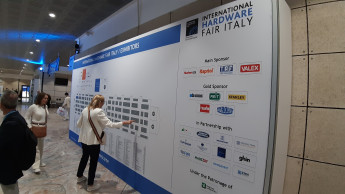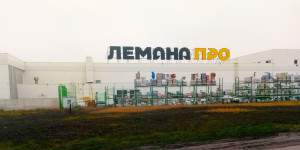
deep insights, facts & figures
02.03.2012
The mistakes most frequently made when sourcing goods in China – and how to avoid them
Buyers often encounter trouble with their shipments from China because of faulty and low quality products. To ensure that quality is of the highest, the quality assurance process has to start right from the beginning at the trade fair when meeting the potential supplier for the first time. Here are some common mistakes related to quality assurance that buyers should avoid, especially those new to China. Mistake 1: Poorly defined specs Where “Design for Manufacturing” leads to “Design from Supplier”. You decide to go factory-direct and give the supplier freedom to handle the product design, such as deciding on the materials packaging layout. This can lead to a final product that is substantially different from the original concept. Another subsequent problem here is that the supplier may think that their input into the design means that they own the Intellectual Property Rights to the product. A simple solution is: Separate engineering from manufacturing to protect your product design. Also, make specifications extremely clear so that there is no room for error. For example if the barcode is too big or too small it may be unreadable to a scanner. Mistake 2: Not knowing the all-in cost of the “China price” There is a lot of additional work to do on top of sourcing the product. Here are the key costs that make up the all-in China price: ► Investment into Tooling You may have to provide equipment to the factory. This is especially common for customised products where a specific mould is needed to ensure the design of, for instance, the logo is correct. ► Insurance for Tooling The buyer has to be responsible for the safekeeping of their own equipment and to protect it from being used by the supplier to copy the product. ‘Stewarding’ services are available where a third party looks after the equipment when it is in the factory, and takes it away after the order is completed. ► Shipping and Logistics Know the all-in price of shipping rates (e.g. check Peak Season Surcharges (PSS)) ► Exchange Rate Volatility The fluctuation of currency rates can lead to the product price changing after the initial agreement. Try to buy in RMB to lock in the price. ► Emergency Visits Last minute long-distance travel and accommodation can be costly but necessary for factory visits, troubleshooting etc. Having someone on the ground via outsourcing can be less expensive. Mistake 3: Failure to conduct due diligence Don’t assume that all the glitz and glamour at the trade fair is how the supplier is in reality – this can only be known with a visit to the actual factory. Another worry is that the trade fair rep is actually an intermediary or trader. Due diligence can simply be requesting information, such as a copy of the business license and customer references, to more investigative verification, such as checking on the financial balance and work conditions which require hands-on interviews and undercover work that a foreign buyer would need to outsource. Mistake 4: Failure to audit the factory / falling for the golden sample Factory audits and quality control (QC) are essential to China sourcing, because the supplier’s guarantee is not enough. Suppliers will also have perfect sample to show you to secure the contract, although the end product can be far worse than the initial sample. In order to make sure the product is of good quality and adheres to international standards, an external QC expert needs to inspect and certify the product. Mistake 5: Who is the project manager? Very few suppliers will make the effort keep you up to date about the production status – the buyer has to lead the project management. A common problem in China is the lack of communication; it is normal if the supplier does not contact you, although no news does not mean good news. Chinese suppliers will tend to conceal any problems, firstly because they don’t want to “lose face”, and secondly the fear that you will quickly switch to another manufacturer. This is also why it is important to have staff on the ground in China to monitor and check regularly on the supplier. The key to communication is to try and build a good relationship – invest in time and talk to them in person and they will be more willing to reveal irregularities. Agree on steps in the supply chain to review the progress together. Mistake 6: Payments not linked to performance Payment terms before signing the contract will lay out the project roadmap. Structure the payment terms so that quality and performance is met. Almost never is 100% payment upfront needed to seal the contract. The most common term is 30% down payment and 70% after the goods are shipped, and this can be further elaborated into 30%-40%-30%: ► The first payment is needed for the supplier to buy materials. ► The second payment occurs only upon confirmation of product quality through QC inspection and certification. ► The final 30% is paid upon receipt and inspection at the final destination. Some suppliers may not agree to this arrangement for the first order, but if you buy regularly, pay on time and build up a good working relationship and mutual trust then the supplier will be more flexible. Mistake 7: Arm’s length buying A very common scenario: You meet the dream supplier at the trade fair and they give you the red-carpet treatment. You will get the tour of the factory as quick as possible, then a big dinner and then karaoke and all kinds of after-hours services. The problem is that many buyers are overwhelmed by the hospitality that they feel as if they are now good friends with the supplier. You should have a good relationship with your supplier, but this is not built up in one visit. Be professional; go back to your hotel after the dinner is finished. Otherwise, in return for the hospitality the supplier will expect that you won’t come down on them too hard because of a shipping delay, or you won’t inspect their products. Mistake 8: Leaky contracts Some buyers, at a terrible risk, just sign a purchase order without any written contract. You should always have a bi-lingual contract signed before you place an initial purchase order because only Chinese contracts are officially recognised in China. A common mistake is that new buyers often confuse the Incoterms and the payment terms. Incoterms, or International Commerce Terms, are international pre-defined contractual sales terms that used in a sales agreement to define the responsibilities and duties of each party. Payment terms however define where and how you should pay your business partner. If Intellectual Property is involved, make sure you sign a Non-Disclosure-Agreement. If you want to use your design to produce in China, make sure you apply for a design patent instead of a copyright. As per definition of the Chinese law, a copyright may entitle a supplier to reproduce, publish and sell the produced goods under the copyright. It cannot provide effective protection if someone uses your design to produce a similar product. Last but not least, include an arbitration clause into the contract. It is more convenient and less expensive for both parties to mediate outside of court Mistake 9: Registering your intellectual property after you have been knocked off Register the trademark for your product not only in your home country, but also in China. You don’t need to have your own company in China to do this – a registered official patent lawyer can do this and it is definitely cheaper than paying the price after you have been knocked off. In China, there are people who register trademarks with no intention of actually producing anything, but rather because you have to go to them to buy your own trademark back. In China the law states: “First to register” and not “first to use” as in most of the Western countries. Under “first to register”, the one who registers first is the trademark owner. Mistake 10: Not knowing which functions to outsource A general rule to differentiate between in-house and outsourcing is: Keep what you do best in-house, and outsource the rest. China has a complicated business environment with many government departments to deal with, so your strengths may lie in business development, client relations and product design, but you do not have enough experience in China for company structuring, accounting or human resources. Seek a China expert, at least at the start, to manage your business structuring and corporate governance.This advice was put together by Fiducia Management Consultants, a professional service provider focusing on Greater China. With three offices located in Hong Kong, Shanghai and Shenzhen, and a multinational team of 90 staff, Fiducia provides China solutions which offer a combination of international expertise and local know-how.
Related articles
Read also

 Menü
Menü















